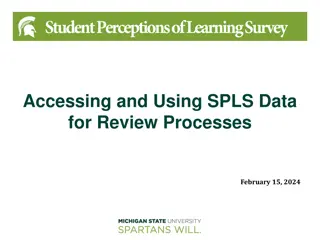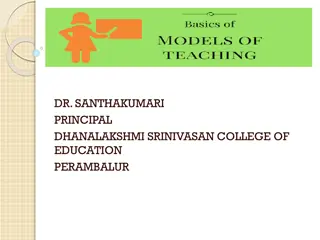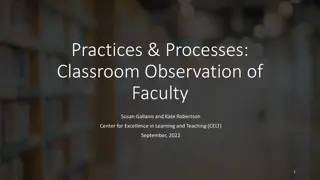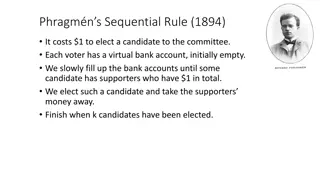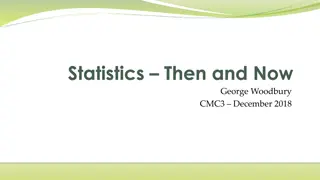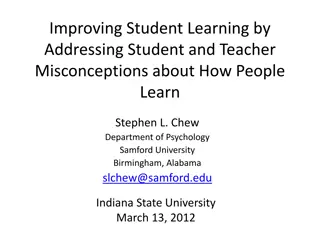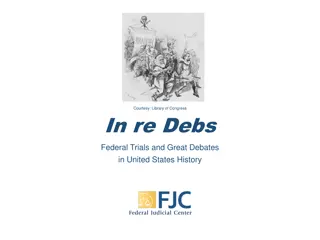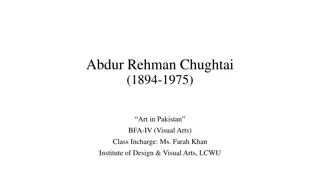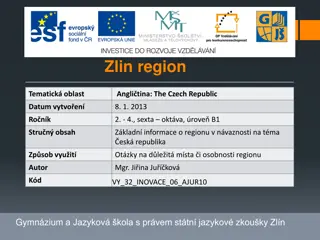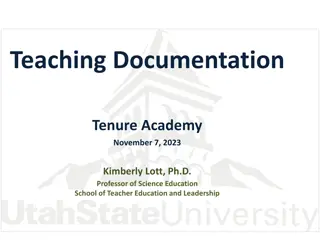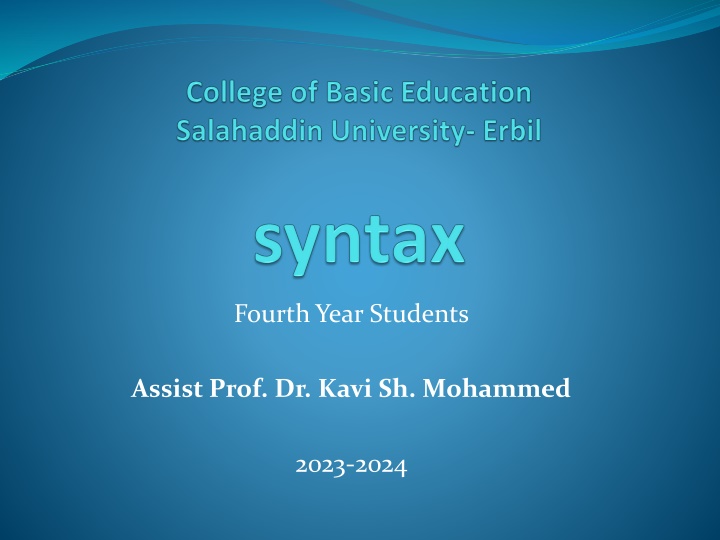
Fourth-Year Students - Syntax and Grammar Overview
Explore the study of syntax and grammar with a focus on basic sentence patterns for fourth-year students. Learn how to identify different sentence structures and expand your knowledge of word organization in sentences. Discover the various components of English sentences and understand how they come together to form coherent communication.
Download Presentation

Please find below an Image/Link to download the presentation.
The content on the website is provided AS IS for your information and personal use only. It may not be sold, licensed, or shared on other websites without obtaining consent from the author. If you encounter any issues during the download, it is possible that the publisher has removed the file from their server.
You are allowed to download the files provided on this website for personal or commercial use, subject to the condition that they are used lawfully. All files are the property of their respective owners.
The content on the website is provided AS IS for your information and personal use only. It may not be sold, licensed, or shared on other websites without obtaining consent from the author.
E N D
Presentation Transcript
Fourth Year Students Assist Prof. Dr. Kavi Sh. Mohammed 2023-2024
Syntax 4thyear students Syntax: the branch of grammar dealing with the organization of words particularly into sentences; equivalently, the study of sentencestructure. (Trask,1993: 273). into larger structures,
Syntax 4thyear students Grammar can be divided into two parts: Syntax (sentence). Morphology (words).
Syntax 4thyear students Basic Sentence Patterns One recent approach to understand English sentences is to recognize the various patterns, of which there are nine, upon which English sentences are based. These basic sentence patterns are combined in various ways to generate longersentences.
Syntax 4thyear students Pattern 1: Noun + verb (to be) + adjective= SVC N: it is a word that is described by the adjective. Adj. : it is a word that describes the noun/ a modifier of the subject.
Syntax 4thyear students For example: - The grass is green. P.1 - The boy is clever. P.1 - The boxes are large. P.1 - Her brother was hungry. P.1 - The party must have been enjoyable. P.1 - The boys were busy. P.1
Syntax 4thyear students NOTE There is an expanded test through which one can know (realize) if a given sentence is belonging to P.1. for example: - That food is good. - That good food is very good. - That food is poisonous. - That poisonous food is very poisonous.
Syntax 4thyear students - My mother is kind. - My kind mother is very kind - My mother is out. - *My out mother is very out. If a sentence does not undergo this expansion, it usually belongs to some pattern other than this.
Syntax 4thyear students This test does not work in all cases because: A- There is a limited number of adjectives that can occur in either the FIRST or the SECOND slot, but not in both. For example, some adjectives are used only before a noun, such as (main, only, western, chief, fellow, mere , upper, utter).
Syntax 4thyear students For example: - The main reason *- The very main reason. - An only child - The chief inspector - That s utter nonsense! - The western way of life - Her fellow students were older than her.
Syntax 4thyear students On the other hand, some others appear after (be) such as (afraid, glad, ill, ready, sorry, well in a good health , bound having a moral or legal duty to do sth ) but not before the noun. For example: - The children are ready. * the ready children. - The boy was ill. * the ill boy .. - He was afraid to answer the door. - The company is bound by UK employment law.
Syntax 4thyear students B- not all adjectives can be modified by very . For example: main, due..). For example: - The train is due. * the train is very due. - The main speaker. * the very main speaker.
Syntax 4thyear students Pattern 2: Noun + verb (to be) + Adverb = SVA N: is the first element that about which assertion is made. Adv. : is the third element that describes the verb (to be). It is modifier. Both v.be and adv. Modify the noun.
Syntax 4thyear students For example: - The child is in the room. - The bedroom was upstairs. - The boys were below. - The party was afterward. - The students are outside.
Syntax 4thyear students NOTE: 1- Sometimes a sentence may have a there or then phrase that takes the place of the single word adverb; however , the sentence pattern remains P2. - The bookswere in the library. (there) - The meeting will beat 6 o clock. (then) - The lecture is on Monday. (then)
Syntax 4thyear students 2- To determine whethera confusing sentence is a P.1 ora P.2, insert the word very before the third element. If the sentence seems natural, it is probably a P.1 sentence. If it seems unnatural, it is probablya P2 sentence. - The sky is (very) blue today. P1 - *The baby is (very) outside this afternoon. P2
Syntax 4thyear students Pattern 3: Noun1 + verb (be)+ Noun1 / SVC N1 (subject): it is the first element that has the grammatical meaning of that which is identified . v.be: it is be identified orclassified as . The second N1 means grammatically that which identifies the subject . complement. It is the subjective
Syntax 4thyear students Note: 1- The superscript after the second N (noun) means that this noun has the same referent as N1. For example: - My brother is a doctor. P.3 Both (brother) and (doctor) refer to the same person.
Syntax 4thyear students - They are my friends. - He had never been an honor student. - That woman is a senator. - This is her husband. - John was an instructor.
Syntax 4thyear students 2- sometimes a personal pronoun can serve as a subjective complement as in: - This is she. *This is her. (her) is an object form. - That is she. - I am he. - It was they. *The people knocking at the door will be them. *The caller to the radio show was him.
Syntax 4thyear students Pattern 4: Noun + Linking Verb + Adjective The verb in p.4 is called a linking verb (LV), as it links the adjectivewith the noun (subject). - Linking verb: it is a type of verb that requires a subject complement to complete the meaning of the sentence. Examples of linking verbs are: seem, appear, become, grow, remain, taste, look, feel, smell, sound, get, continue, go.
Syntax 4thyear students For example: - The milk remained sweet for a week. - The dog smells bad. - The students in the back row look sleepy. - The workers look tired. - The bridge appeared too weak to hold us all. - The milk smells sour to me.
Syntax 4thyear students NOTE: A linking verb may be preceded by an auxiliary. As in: - The party may become noisy. - Your sister must have seemed friendly.
Syntax 4thyear students There are some other verbs may on occasion be followed by an adjective and therefore conform to P.4 - His face went pale. - He proved true to his cause. For verbs like these one can substitute be, become, or remain with no substantial change of meaning.
Syntax 4thyear students Similarities and differences between v.be and linking verb . 1- Both verb (be) and linking verbs are used to link the subject with the word that modifies it (noun or adjective). 2- both are followed by a subject complement. 3- both of them can be used as main verbs.
Syntax 4thyear students There are some differences between them: 1- LVs often suggest a possibility rather than offer an absolute observation, as does be . For example: - The milk tasted sour. (although the milk tasted sour, it may not have been sour. This is a linking verb). - The milk was sour. (in this example the milk was indeed sour).
Syntax 4thyear students 2- linking verbs often imply certain kinds of action or activity such as smelling, tasting, becoming so on . The verb to be does not do so directly. 3-LVs are not used as auxiliaries in verb phrases but may be preceded by an auxiliary, while the various forms of be are. - Is playing - Was playing - May be playing - May have been playing
Syntax 4thyear students Pattern 5: - The two superscripts show that both nouns have the same referent. - The verb, which links the subject and its complement, is a linking verb. - The number of linking verbs that may occupy the verbal position in this pattern is very small. Among them are (remain, become, appear, seem, continue, stay, make). Noun1 + Linking verb+ Noun1
Syntax 4thyear students For example: - My sister remained an outstanding student. - Alma became the class president. - We shall continue the discussion tomorrow. P.7 - The governor stayed the execution. - My sister seems your sister. - They appeared friends to all of us. - Your friend becomes an actor.
Syntax 4thyear students Pattern 6: Noun + Intransitive Verb (Intr. v) / SV The verb in Pattern 6 is of the kind called intransitive. An intransitive verb is self-sufficient; it can stand alone with its subject. Thus, the verb completes the statement; no further completers are needed. For example: - We agree. - Dogs bark. - Girls smile. - The train has arrived.
Syntax 4thyear students Intransitive verb: it is a type of verb that shows action of some sort but does not have a direct object. Examples: - The sportsmen fished. - The sportsmen were fishing. 1- The intransitive verb can be modified by a word or word groups known as adverbs or adverbials. - The sportsmen fished early. - The sportsmen were fishing in the stream. - The sportsmen were fishing when we drove up.
Syntax 4thyear students 2- An intransitive verb is usually not completed by a noun or pronoun. As in: - They finished late. (intr. v) - They finished the game. (tran. v) If you are in doubt whether a word following the verb is a modifier that goes with an intransitive verb or a completer of a transitive verb, a substitution can settle the matter. If you can substitute him, her, it, or them, the word is a completer and the verb is not intransitive. He hammered fast. (Intransitive verb) He hammered the nail. (Transitive verb)
Syntax 4thyear students Pattern 7 Noun 1 + Transitive Verb (Trn. v) + Noun 2/SVO The verb in this pattern is completed by a noun or pronoun for which one can substitute him, her, it or them. The noun, as shown by the superscript 2, does not have the same referent as the subject. It is called the direct object of grammatical meaning of action or that is affected by the verb. the verb and has the undergoer of the
Syntax 4thyear students Transitive verb: it is a type of verb that patterns with direct objects to give the completeness - that is they express an action that directly affects the grammatical unit (usually a noun or pronoun) elsewhere in a clause or sentence. In another way, a transitive verb shows an action that is passed on to thedirectobject. (Lobergerand Shoup, 2009:45). sentence a sense of
Syntax 4thyear students - Types of transitive verbs: 1- monotransitiveverb: SVO (DO) P7 - She make s a cake. 2- ditransitive verb: SVOO (In.O & DO)P8 - Fred gave her a huge vote of confidence. 3- Complex transitive verb: SVOCo P9 - People called him Johnny.
Syntax 4thyear students Examples: - The driver turned the car around. - Someone cleans the palace. - The child poured the tea. - She read the message. - The salesman sold the car. - Mrs. Grundy grew roses every year. - At the desk we met the nurse. - She sang a beautiful folk song.
Syntax 4thyear students Pattern 8: Noun1 + Transitive Verb + Noun2 +Noun3/ SVOO e.g. The mother bought the girl a dress. In Pattern 8 thereare some points to beobserved: 1- The superscripts 1, 2, and 3 indicate that each noun has a different referent; mother, girl, and dress are three separated entities.
Syntax 4thyear students 2- We see two grammatical objects after the verb bought. These two objects are called, in order, the indirect and the direct object. If we omit the first one, the pattern becomes number 7 and dress is seen to be the directobject. 3- The verbs that can be used in Pattern 8 are restricted. Some of the common ones are : give, make, find, tell, buy, write, send, ask, play, build, teach, assign, feed, offer, throw, hand, pass, sell, pay.
Syntax 4thyear students 4- In Pattern 8, a sentence may be transformed into passive by making either the direct or the indirect object the subject of the passive verb. *A dress was bought the girl by her mother. The girl was bought a dress by her mother. In some cases, however, the passive transform does not sound fully natural and seems to demand a preposition, as in: - A dress was bought for the girl by her mother.
Syntax 4thyear students 5- The grammatical meaning of the indirect object is beneficiary of the action of the verb-plus-direct-object. - She sold the student a ticket. - He built them a playpen. - We found Maria an apartment for the semester. - The instructor asked her a question. - He offered his friend a car. - The company made the manager a fine offer. -
Syntax 4thyear students - He gave all that information to the FBI. - Somebody paid the men 200. - Can you bring me some milk from the shop? - I read Suzan a story. - Can you pass me the salt? - He made himself a cup of coffee. - His father bought him a car.
Syntax 4thyear students Note: 1- many verbs that can have two objects may also be used with an object (D.O.). - I read the story. 2- with many verbs that can have two object, it is possible to reverse the order of the objects if we put for or to before the I.O.(this is then called a prepositional object). - I built my daughter a doll s house. - I built a doll s house for my daughter.
Syntax 4thyear students 3- If a pronoun is used in the position of the direct object (N3), it must be the firstof the two objects: - The mother bought it forthegirl. - *The mother bought thegirl it. 4- Similarly, if N2 and N3 are both pronouns, again the direct object must occur first. - The mother bought it for her. - *The mother bought it her.
Syntax 4thyear students Pattern 9: N1 +TrV + N2 plus one /SVOCo N1: the doer of the action (subject) N2: the receiver of the action (object/direct) `
Syntax 4thyear students One: is that or an element that completes the direct object. It can be one of the followings: a)N2 b)Adj c)Pronoun d) Adv (of place), e) Verb, present participle f) Verb, past participle g) Prepositional phrase h) infinitive phrase with to be. - A limited number of verbs can be used for P.9 like: (name, choose, elect, appoint, select, designate, vote, make, declare, nominate, call, consider, imagine, think, believe, feel, keep, suppose, find, prove, label, judge)
Syntax 4thyear students a) The basketball team elected John captain. N b) He considered her brilliant. adj c) I thought the caller you. pronoun d) We supposed him upstairs. e) I imagined her eating. f) I found the food eaten. V. past participle g) We considered her in the way. Prep. Ph. h) We thought Kim to be a fine player. Infin. With to The coach designated Jan the new manager of the team. adv V. present participle
Syntax 4thyear students Pattern 9, likes Pattern 8, has two objects (elements) following the verb. But it differs from Pattern 8 in three respects: 1- In the order of objects the direct object comes first. In some sentences, if we omit the second object, we are left with Pattern 7 which contains only the direct object after the verb: - The basketball team chose John. The second object, in P.9, is called the objective complement, because it completes the direct object.
Syntax 4thyear students 2- In Pattern 9 both objects have the same referent; that is, both John and captain refer to the same person. 3- In Pattern 9, only the first object, the direct object, can be made the subject of a passive verb. We can transform the pattern sentence into: John was chosen captain. Butwecan t make the objectcomplementsuch a subject: -* captain was chosen John. (this makes no sense)
Syntax 4thyear students The rescuers found the survivors unhealthy. (adj) We found the kite torn by the branches of tree.(p.p.) From distance, I thought Kerry him. Pro. The babysitter heard the child giggling. (present p.) The club members made Richard treasurer. (n) Fortunately, we saved some money for the trip home. They imagined him there. Adv. We call the strange people happy. I imagine her a doctor. The club members elected Jane treasurer. We declared (assigned)Jack to travel abroad.


